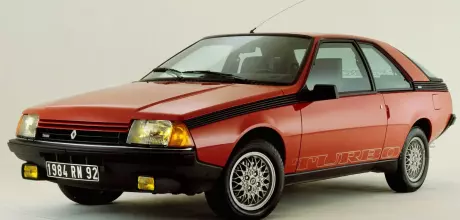1982 Renault Fuego - First production car with remote locking
By and large, when it comes to the business of fitting innovative technologies into their cars, automobile manufacturers tend to reserve such features for their flagship models or limited-run offerings. The price tags and discerning clientele who can afford it justify the cost of such fancy features.
THE INNOVATORS
Take the Mercedes-Benz S-Class. Not only is it a beautifully crafted and coveted status symbol, but also each generation has been a rolling showcase for every new technology the company has come out with, from crumple zones to ABS and adaptive cruise control. Still, every now and then, the odd workhorse manages to buck the trend and usher in technologies that will become all but indispensable. Renault’s largely forgotten two-door Fuego hatchback is a prime example.
Engineer Paul Lipschutz was an employee of the Neiman lock company, the firm that produced one of the earliest steering-column locking mechanisms, as well as other automotive security features. Lipschutz was particularly interested in the protective measures used for locking mechanisms and developed a keyhole shutter to keep water and dust out of exposed locks.
While this system was a success, Lipschutz wanted to eliminate the possibility of environmental agents reaching the inner workings of a car’s door locks altogether using what he termed a “hermetically sealed” solution.
The idea of bypassing a vehicle’s physical key-based locking system wasn’t entirely new. In 1980, Ford introduced what it called Securi Code – an exterior keypad with a numeric combination lock – on several of its models, but the system was clumsy and unreliable.
Drawing inspiration from building access systems and security coding for automated garage door openers, Lipschutz developed a small infrared transmitter integrated into a key fob. It emitted a specific signal to a receiver mounted to the rear-view mirror, which was programmed to respond to the same infrared signature. In a 1979 patent application, Lipschutz stated: “On application by the user of the correct transmitter in close proximity to the receiver, the coded pulses from the emitter pass to the detector. The output signals are compared with the output of the memory to provide an output signal from the comparator for actuating the locking member.”
The system had a range of only around five feet, but it was preferable to fishing for keys in your pocket or handbag while encumbered with shopping on a rainy day. The novel system, wearing the Infrawave tag, was introduced on the Renault Fuego in 1982. As homage to its inventor, Renault even dubbed its new remote central locking system “Le Plip”, a contraction of Paul Lipschutz’s name that would find its place in common automotive parlance as a verb for remotely unlocking a vehicle: the act of “plipping” the remote.
The introduction of such an innovative piece of technology on a relatively affordable model worked wonders for Renault’s reputation. Soon, manufacturers such as BMW, Honda and Toyota would begin to offer their own takes on Lipschutz’s Infrawave system. As time and technology progressed, the infrared signal would make way for longercarrying and more secure radio-wave-based remote central-locking solutions.
Today, data-network-driven solutions using smartphones are beginning to gain traction, but the essence of Lipschutz’s system remains largely unchanged.
THEY ALSO PAVED THE WAY
1965 FORD THUNDERBIRD The ‘65 Thunderbird was one of the first cars to feature a two-sided key that improved security by making duplication more difficult, and it took the guesswork out of which way the key was inserted into the ignition.
2003 MERCEDES-BENZ S-CLASS The W220 S-Class was the first car to feature a proximity fob that could unlock and start the car without physical keys. The credit-card-sized fob proved unreliable and prone to failure if subjected to high temperatures or impacts, though.
2016 VOLVO S90 AND XC90 Volvo unveiled the first production-series digital key system for its S90 and XC90 models. Using your smartphone’s Bluetooth, GPS and a proprietary app, the digital key could unlock the vehicle via proximity sensors.
2019 HYUNDAI SANTA FÉ Hyundai’s clever Touch ID fingerprint reading system allows drivers to unlock their cars by touching a small pad on the door handle, starting the engine by placing their finger on a similar sensor on the ignition switch.


